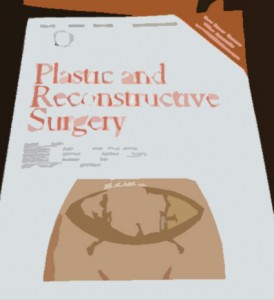Journal time! October 2012 issue of Plastic and Reconstructive Surgery Journal has an article on new ways to help fat survive when grafting. Hold onto your hat, this title is a doozy. “Treating Fat Grafts with Human Endothelial Progenitor cells Promotes Their Vascularization and Improves Their Survival in Diabetes Mellitus.” (Phew! quite a mouthful.)

In English:
Human Endothelial Progenitor cells are found in bone marrow. It is thought these cells are needed to create a blood supply to the grafted fat, and assist the transferred fat to become part of its new surroundings.
Diabetics have impaired endothelial progenitor cells. It is thought this is why they have higher issues with loss and rejection of organ transplants.
This was a study in mice, where some were diabetic, some were not. All received fat grafting. They were compared at 18 days and 15 weeks after transplant. They measured weight, volume, vascular endothelial growth factor levels, receptors, nitric oxide synthase, and histology to analyze the extend of new blood vessels.
Findings?
- Untreated fat grafts in diabetic mice were fully resorbed at 15 weeks
- If the diabetic mice were treated with endothelial progenitor cells, the graft take was similar to nondiabetic mice.
- It may decrease apoptosis in fat cells in all fat grafts (which is good. fat apoptosis= cell suicide)
So, this study is most interesting for diabetic patients. It indicates diabetic patients may have issues with fat transplantation, as the fat may not survive well. From a common sense perspective, it makes sense, as diabetes is thought to impair the small blood vessel circulation, which is the blood supply needed to help the newly transferred fat survive. It does not answer if there are nuances- site on body, how much fat is transferred, extent of diabetes, etc.
But anything which researches fat and how to help it survive better is interesting to me. These are still animal models, so far from being usable in a clinical setting. It does help us understand fat transfer better and the factors which make it a success or not.
I’ll keep the new information coming.
